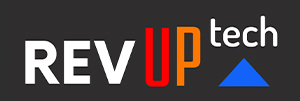REACT
React is a popular, high-performance open-source JavaScript library from Facebook used for building HTML5 web applications and rapidly responsive user interfaces. It is used for view rendering work in large scale or single page applications (SPA) to present data that changes over time. This course explores all the various reasons to incorporate REACT into your coding project.
3 days - $1,895.00
Course taught by an expert Computer Coding Instructor.
Prerequisites:
Basic knowledge of computer coding is essential.
Course Outline
Introduction and Overview
Features Of React And Flux
Benefits Of The Virtual DOM
Configuring The Development And Build Environment
Designing Custom React Components
Displaying React Content
Employing React.Createelement() And React.DOM.* Factories
Rendering The Application With Reactdom.Render()
Constructing The UI On The Server With Rendertostring()
Leveraging JSX for UI design
Coding Custom Components With React.Createclass()
Generating Component Output With The Render Method
Composing A JSX Component Hierarchy
Incorporating Third-Party Components
Activating React Components
Parameterizing Components
Disambiguating Component Properties And State
Inserting Properties Into Rendered Output With This.Props
Passing Property Values Using JSX { } Expressions
Initializing Default Values With Getdefaultprops()
Manipulating component state
Setting Starting State Values With Getinitialstate()
Reading Application Data With This.State
Mutating Data With This.Setstate()
Harnessing React Autobinding And Event Aggregation
Integrating into the component life cycle
Attaching AND DETACHING LOGIC AND EVENT HANDLERS IN Componentdidmount AND Componentwillunmount
Enhancing PERFORMANCE WITH Componentshouldupdate
Responding TO CHANGES WITH Componentwillreceiveprops
Developing React Forms
Creating Flux Applications
Modeling Client-Side Data Interactivity
Identifying Flux Participants
Actions
Dispatcher
Stores
Views
Harnessing Unidirectional Data Flow
Comparing Flux To Model View Controller, Redux And Relay
Coding a Flux application
Extending The Facebook Dispatcher
Utilizing Node.Js Eventemitter With Custom Stores
Integrating REST Access With Flux Action Creators
Integrating routing into Flux
Exploiting The React-Router For Semantic Urls
Mapping URL Paths And Parameters To Components
Analyzing React Applications
Developer Tools
Inspecting React Components With Browser Extensions
Identifying And Debugging Rendering Errors
Unit testing
Running Tests With Jest
Simulating Event Dispatch With Reacttestutils.Simulate
Performance testing
Establishing A Baseline
Profiling React Execution With Perf.Start() And Stop()
Optimizing Component Reconciliation With Key
Animating React Applications


